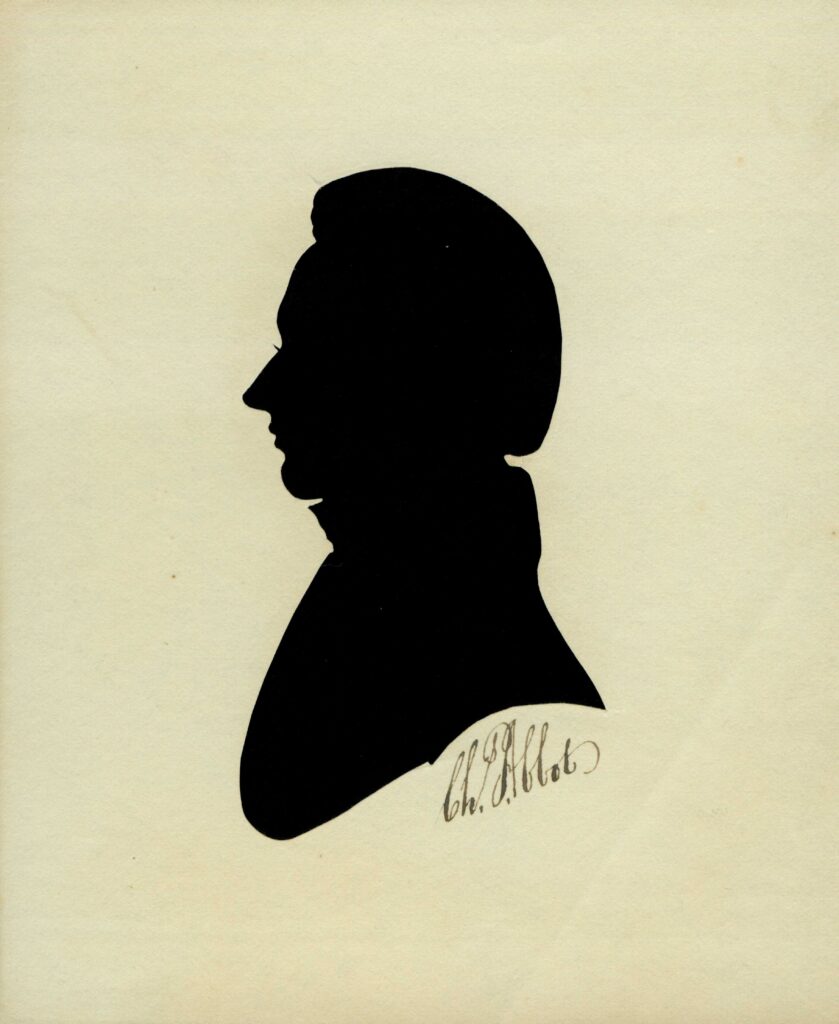
The Hero of Castine
Charles Jeffrey Abbott was born in Castine, Maine, in 1806. He was the son of William “Squire” Abbot, a prominent Castine lawyer and politician, and Rebecca Atherton. Charles was the second of seven siblings, and became the eldest after the childhood death of his brother William Jr. He was also the relation of John S.C. Abbott, his future Bowdoin classmate. Charles grew up in the “Abbot House” in the center of town, sometimes considered to be the most “beautiful home in Castine.” He lived there from birth until he started Bowdoin at the age of fifteen.
When Abbott matriculated in 1821, he began boarding at Mr. J. Grow’s with Gorham Deane. Sophomore year he moved on campus to Maine Hall, and he spent his junior and senior years in Winthrop, living with George Washington Lane and Charles Snell respectively. For activities, Abbott chose to be a member of the Athenean Society. Abbott got into an average amount of trouble at Bowdoin. He was sometimes fined for neglecting his work and unexcused absences and was once publicly reprimanded for “prevaricating before the Government.” However, the scholar never found himself in serious trouble. Academically, Abbott was a strong student who improved thorough his Bowdoin career. At his Senior exhibition he was asked to give a forensic lecture with David Shepley about “Whether Theatrical Exhibitions exert a favorable influence upon Society.” Abbott was also elected to Phi Beta Kappa and received the tenth rank in class, alongside his roommate Snell. As such, the pair gave a colloquy entitled, “The probable Result of Efforts for the Emancipation of Slaves.” In the speech, Abbott took a harsh stance against slavery, claiming that, “too long has slavery continued as a continuous monument of injustice and oppression.” However, rather than immediate emancipation, he preferred a more gradual approach consisting of: “The abolition of the slave trade; the establishment of colonization societies, [and] the diffusion of knowledge among the slaves.”
After leaving Bowdoin, Abbott first moved to Charleston, South Carolina, where he worked as a private family tutor. A few years later he would move back to Castine, his hometown and the town to which he would devote the rest of his life. Contemporaries believed that he had “done more for Castine than any other living man within the memory of this generation.” His first service to Castine was that of a teacher at the local school. Abbott also started to study law under his father and when William moved to Bangor in 1829, Charles took over his home and law practice. In 1835, Abbott married Sarah A. Hook of Castine. The pair had four children, but their marital bliss turned to tragedy when Sarah passed away in 1843. This personal tribulation did not stop Abbott’s professional devotion. In 1849, Abbott became the U. S. Colonel for customs at Castine. Around this time, he also took an interest in education reform. At a town meeting in the 1850’s, Abbott “decried the deplorable condition” of Castine schools, and thus became the chairman of the school committee. He spent years working to reform Castine’s educational institutions, enduring many trials and setbacks along the way. But in the end, Abbott created “a system of schools, admired and appreciated.” He also helped found the Eastern Normal School for teachers. In 1856, Abbott was married for a second time to T. J. Whitney Johnston, the daughter of a local merchant. Abbott’s last professional advancement came in 1866, when he was elected to the Maine State Senate. He spent two terms in this office and his most notable contribution was the passage of Maine’s public library law.
Abbott’s contemporaries viewed him as an empathetic and community-oriented man, but also as a bit of an eccentric. One biographical sketch described Abbott as living “largely within himself” and “a man of marked peculiarities.” For instance, while the rest of his family spelled their surname with one t, Charles insisted on referring to himself as “Abbott.” In 1875, Abbott traveled to Brunswick to join the twelve remaining members of the Class of 1825 for their 50th reunion. He died six years later, at the age of 76. He outlived three of his four children, leaving his daughter Madge as his only heir. The Castine community mourned his loss and his name remained on one of the school buildings until 1961.